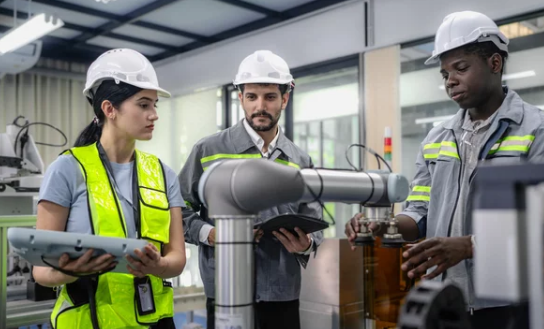Nuclear energy is one of the most efficient and low-carbon energy sources available, but safety remains the foremost concern for governments, industries, and the public. Over the decades, engineering innovations have revolutionized the nuclear sector, making reactors safer, more resilient, and better equipped to handle extreme conditions. From advanced materials to AI-driven monitoring systems, engineers are transforming the safety landscape of nuclear power.
This article explores the key engineering breakthroughs that are enhancing nuclear safety, from reactor design to containment systems, cooling technologies, and emergency response mechanisms.
Advanced Reactor Designs for Enhanced Safety
Modern reactors integrate innovative designs that prioritize safety:
1. Small Modular Reactors (SMRs)
- Compact and factory-built for precision construction.
- Incorporate passive safety systems that function without external power or operator intervention.
- Scalable and flexible, reducing the risks associated with large, centralized reactors.
2. Generation IV Reactors
- Include high-temperature gas-cooled reactors (HTGRs), molten salt reactors (MSRs), and fast neutron reactors.
- Designed with improved fuel efficiency, lower pressure operation, and enhanced structural integrity.
- Capable of withstanding accidents without catastrophic failure.
3. Fusion Reactors
- Still experimental, but inherently safer due to no chain reaction risks.
- Engineering innovations focus on plasma containment and neutron-resistant materials, ensuring safe operation.
Material Science Innovations
Materials engineering is a cornerstone of nuclear safety:
- High-Strength Steels: Reinforced pressure vessels resist extreme pressures and neutron radiation.
- Accident-Tolerant Fuel Cladding: Reduces the risk of fuel failure in high-temperature scenarios.
- Ceramic Composites: Used in HTGRs and fusion reactors for superior heat and radiation resistance.
- Nanomaterials and Coatings: Protect structural components from corrosion, erosion, and thermal stress.
By developing indestructible and resilient materials, engineers extend reactor lifespans and minimize failure risks.
Cooling System Advancements
Effective cooling is critical for nuclear safety, and engineers have pioneered several breakthroughs:
- Passive Cooling Systems: Operate without power to prevent core overheating during emergencies.
- Redundant Cooling Loops: Ensure multiple pathways for heat removal, reducing risk of system failure.
- Liquid Metal and Gas Coolants: Offer superior heat transfer and higher operational efficiency.
- AI-Enhanced Monitoring: Predicts coolant anomalies and optimizes thermal performance in real time.
Advanced cooling technologies directly prevent accidents like meltdowns and enhance reactor resilience.
Containment and Structural Safety
Containment systems are the last line of defense against radiation release:
- Reinforced Concrete and Steel Liners: Protect against internal pressure spikes and external threats.
- Hybrid Containment Designs: Combine dry and wet systems for maximum safety.
- Seismic and Impact Engineering: Structures are tested to withstand earthquakes, tsunamis, and accidental impacts.
- Digital Monitoring: AI and sensor networks continuously assess structural integrity.
Modern containment systems ensure that even in worst-case scenarios, radioactive materials remain fully enclosed.
Digital Innovation and AI Integration
The integration of AI and digital systems has transformed nuclear safety management:
- Digital Twins: Virtual replicas of reactors simulate operations under normal and extreme conditions.
- Predictive Maintenance: Machine learning predicts equipment failures before they occur.
- Autonomous Control Systems: Adjust reactor parameters in real time for optimal safety.
- Emergency Response Simulations: AI helps prepare engineers and operators for rare or complex scenarios.
Digital technology allows for proactive safety management, reducing human error and enhancing reliability.
Global Engineering Projects Advancing Safety
Several nuclear projects exemplify engineering breakthroughs in safety:
- NuScale SMRs (USA): Passive safety systems capable of indefinite cooling without operator intervention.
- ITER Fusion Project (France): Advanced plasma containment and heat management systems.
- China’s HTR-PM: High-temperature gas reactors with redundant cooling and robust containment.
- Russia’s BN-800 Fast Reactor: Incorporates advanced structural materials and liquid metal cooling.
These projects showcase the latest technologies and design philosophies that prioritize nuclear safety.
Emerging Trends in Nuclear Safety Engineering
The future of nuclear safety is being shaped by several key trends:
- Integration with Renewable and Hybrid Systems: Balancing nuclear with solar, wind, or industrial heat applications.
- AI-Driven Optimization: Real-time monitoring and autonomous decision-making for reactors.
- Accident-Tolerant Fuel Development: Reducing risks in high-temperature and off-normal conditions.
- Global Collaboration: Sharing data, research, and engineering practices to establish world-class safety standards.
These trends ensure that nuclear power remains safe, reliable, and sustainable for decades to come.
Conclusion
Engineering breakthroughs are transforming nuclear energy from a high-risk technology into a safe, efficient, and reliable energy source. Through advanced reactor designs, cutting-edge materials, innovative cooling systems, robust containment, and AI-driven monitoring, engineers are redefining what nuclear safety means.
From SMRs and Generation IV reactors to fusion experiments like ITER, these innovations demonstrate that nuclear energy can meet the world’s growing energy demands without compromising safety. By continuing to push the boundaries of engineering, the nuclear industry is poised to provide clean, secure, and resilient energy for the 21st century and beyond.
Also Read :
